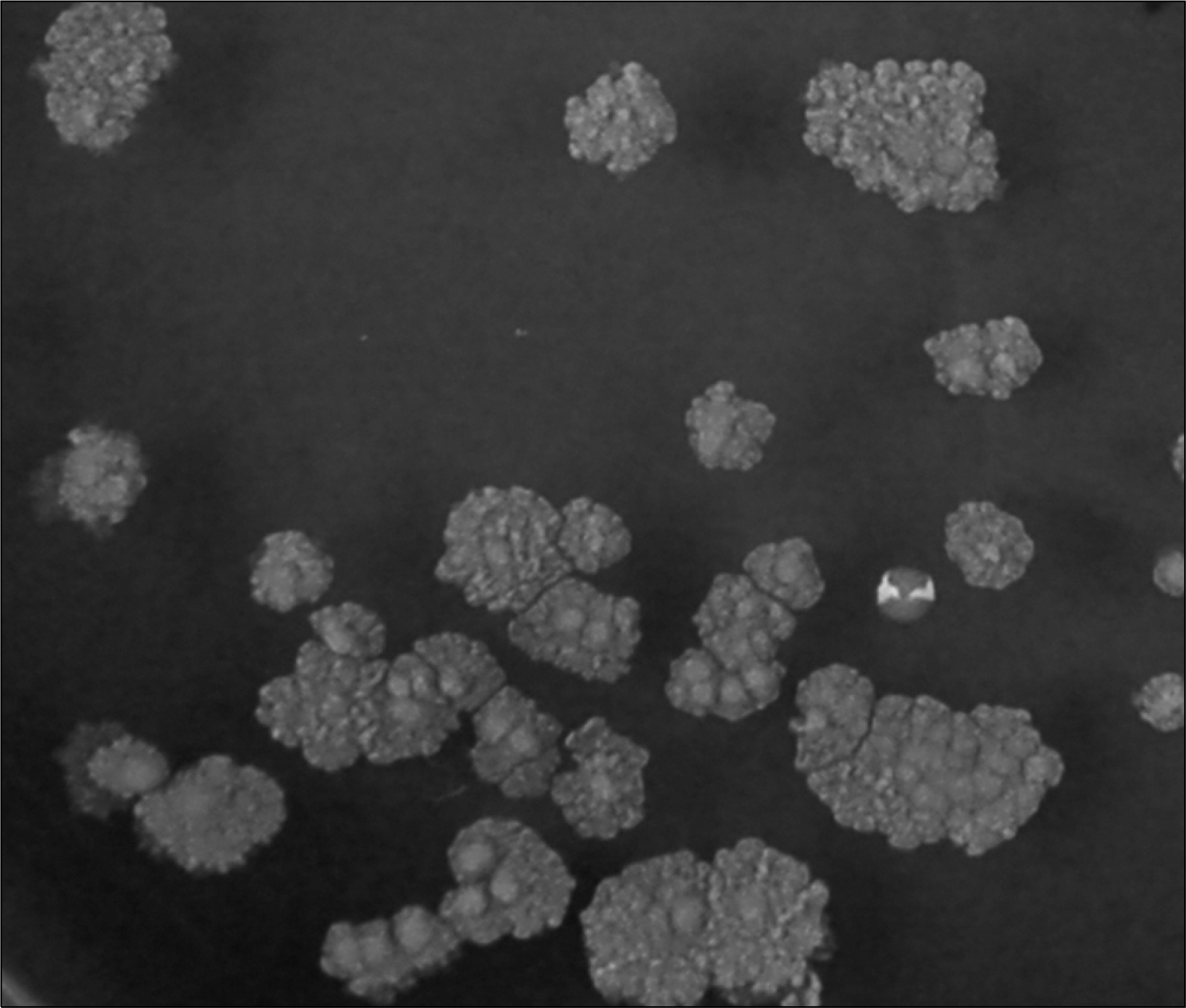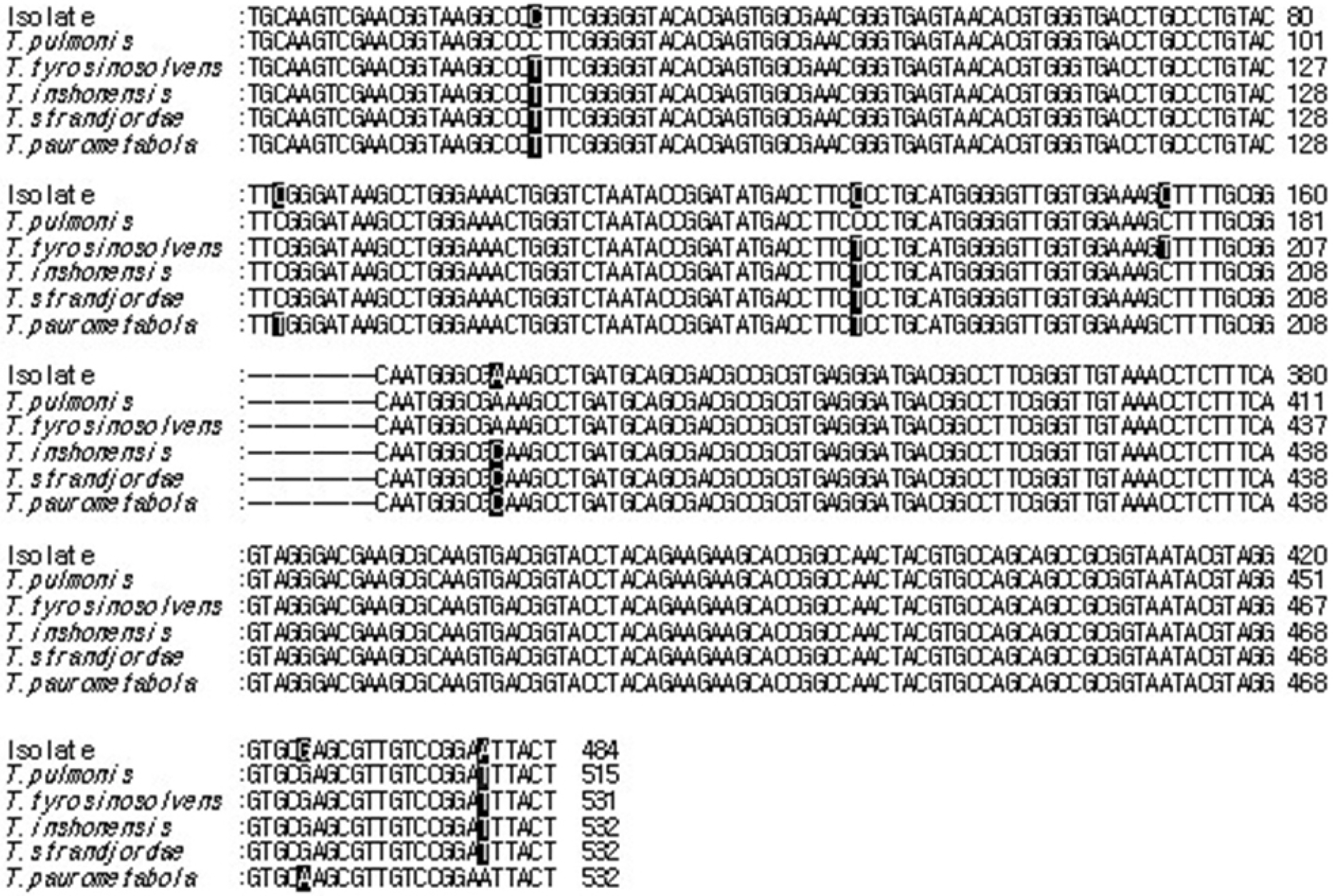Korean J Clin Microbiol.
2010 Jun;13(2):93-97. 10.5145/KJCM.2010.13.2.93.
A Case Report of Tsukamurella pulmonis Infection Misidentified as Atypical Mycobacteria
- Affiliations
-
- 1Department of Laboratory Medicine, Chung-Ang University College of Medicine, Seoul, Korea. cpworld@cau.ac.kr
- 2Department of Internal Medicine, Chung-Ang University College of Medicine, Seoul, Korea.
- 3Department of Pediatrics, Chung-Ang University College of Medicine, Seoul, Korea.
- KMID: 1461650
- DOI: http://doi.org/10.5145/KJCM.2010.13.2.93
Abstract
- We report a case of catheter-related bacteremia due to Tsukamurella pulmonis. T. pulmonis is a rare cause of opportunistic infection in immunosuppressed patients and in cases of indwelling foreign materials. This infection was nearly impossible to identify using conventional phenotyping methods because of its similarities to the related genera Nocardia, Rhodococcus, Gordonia, Streptomyces, Corynebacterium, and Mycobacterium. This organism was initially misidentified as Mycobacterium aubagnense through PCR-RFLP analysis. We correctly identified this organism using 16S rRNA sequencing combined with phenotyping tests.
MeSH Terms
Figure
Cited by 1 articles
-
A Case of Catheter-Related Bloodstream Infection by Tsukamurella inchonensis in a Pediatric Patient Receiving Home Intravenous Antibiotic Treatment
Youkyung Seo, Hae-Sun Chung, Yangsoon Lee, Juwon Kim, Dongeun Yong, Seok Hoon Jeong, Seok Joo Han, Kyungwon Lee
Lab Med Online. 2012;2(2):105-110. doi: 10.3343/lmo.2012.2.2.105.
Reference
-
1. Schwartz MA, Tabet SR, Collier AC, Wallis CK, Carlson LC, Nguyen TT, et al. Central venous catheter-related bacteremia due to Tsukamurella species in the immunocompromised host: a case series and review of the literature. Clin Infect Dis. 2002; 35:72–7.2. Yassin AF, Rainey FA, Brzezinka H, Burghardt J, Lee HJ, Schaal KP. Tsukamurella inchonensis sp. nov. Int J Syst Bacteriol. 1995; 45:522–7.
Article3. Shim HE, Sung HS, Baek SM, Namgung S, Kim MN, Kim YG, et al. A case of catheter-related bacteremia of Tsukamurella pulmonis. Korean J Lab Med. 2009; 29:41–7.
Article4. Yassin AF, Rainey FA, Brzezinka H, Burghardt J, Rifai M, Seifert P, et al. Tsukamurella pulmonis sp. nov. Int J Syst Bacteriol. 1996; 46:429–36.
Article5. Ninet B, Monod M, Emler S, Pawlowski J, Metral C, Rohner P, et al. Two different 16S rRNA genes in a mycobacterial strain. J Clin Microbiol. 1996; 34:2531–6.
Article6. Kattar MM, Cookson BT, Carlson LC, Stiglich SK, Schwartz MA, Nguyen TT, et al. Tsukamurella strandjordae sp. nov., a proposed new species causing sepsis. J Clin Microbiolol. 2001; 39:1467–76.7. Woo PC, Ngan AH, Lau SK, Yuen KY. Tsukamurella conjunc- tivitis: a novel clinical syndrome. J Clin Microbiol. 2003; 41:3368–71.8. Olson JB, Harmody DK, Bej AK, McCarthy PJ. Tsukamurella spongiae sp. nov. a novel actinomycete isolated from a deep-water marine sponge. Int J Syst Evol Microbiol. 2007; 57:1478–81.
Article9. Alcaide ML, Espinoza L, Abbo L. Cavitary pneumonia secondary to Tsukamurella in an AIDS patient. First case and a review of the literature. J Infect. 2004; 49:17–9.
Article10. Rey D, Fraisse P, Riegel P, Piemont Y, Lang JM. Tsukamurella infections. Review of the literature apropos of a case. Pathol Biol (Paris). 1997; 45:60–5.11. McNabb A, Shuttleworth R, Behme R, Colby WD. Fatty acid characterization of rapidly growing pathogenic aerobic actinomycetes as a means of identification. J Clin Microbiol. 1997; 35:1361–8.
Article12. Millar BC, Xu J, Moore JE. Analysis of 16S-23S intergenic spacer regions of the rRNA operons in Tsukamurella pulmonis. Br J Biomed Sci. 2006; 63:25–6.13. Perez VA, Swigris J, Ruoss SJ. Coexistence of primary adenocarcinoma of the lung and Tsukamurella pneumonia: a case report and review of the literature. J Med Case Reports. 2008; 2:207.
Article14. Stanley T, Crothers L, McCalmont M, Xu J, Millar BC, Goldsmith CE, et al. The potential misidentification of Tsukamurella pulmonis as an atypical Mycobacterium species: a cautionary tale. J Med Microbiol. 2006; 55:475–8.
Article15. Pauls RJ, Turenne CY, Wolfe JN, Kabani A. A high proportion of novel mycobacteria species identified by 16S rDNA analysis among slowly growing accuprobe-negative strains in a clinical setting. Am J Clin Pathol. 2003; 120:560–6.
Article16. Adékambi T, Colson P, Drancourt M. rpoB-based identification of non pigmented and late-pigmenting rapidly growing mycobacteria. J Clin Microbiol. 2003; 41:5699–708.17. Adékambi T and Drancourt M. Dissection of phylogenetic relationships among 19 rapidly growing Mycobacterium species by 16S rRNA, hsp65, sodA, recA, and rpoB gene sequencing. Int J Syst Evol Microbiol. 2004; 54:2095–105.18. Turenne CY, Tschetter L, Wolfe J, Kabani A. Necessity of quality-controlled 16S rRNA gene sequence databases: identifying nontuberculous Mycobacterium species. J Clin Microbiol. 2001; 39:3637–48.
- Full Text Links
- Actions
-
Cited
- CITED
-
- Close
- Share
- Similar articles
-
- A Case of Catheter-Related Bloodstream Infection by Tsukamurella inchonensis in a Pediatric Patient Receiving Home Intravenous Antibiotic Treatment
- A case of Tsukamurella tyrosinosolvens peritonitis associated with continuous ambulatory peritoneal dialysis
- A Case of Catheter-Related Bacteremia of Tsukamurella pulmonis
- A Case of Catheter-Related Bloodstream Infection Caused by Tsukamurella tyrosinosolvens
- A Case of Mycobacteria chelonae Infection after Injection of Filler



